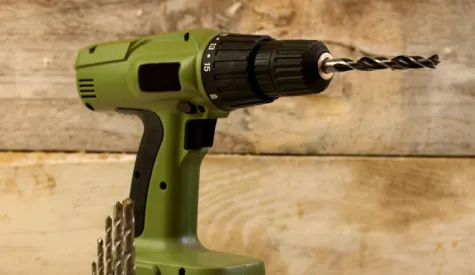All About OSHA's "Focus Four" Construction Hazards

In the construction industry, certain hazards are present every day on the job site. To better understand and avoid these types of hazards workers must first be able to identify them clearly.
The Occupational Safety & Health Administration (OSHA) has identified the four leading causes of fatalities in the construction industry – known as OSHA’s “Focus Four Hazards” or "Construction Focus Four Hazards".
The Focus Four Hazards consist of Falls, Caught-In or -Between, Struck-By, and Electrocution. In 2019, the number of fatal injuries in construction rose to 1,102, a 41.1% increase since 2011 (Source CPWR).
Falls
Falls remain today the number one cause of work-related deaths in construction. According to OSHA, a fall hazard is anything at your worksite that could cause you to lose your balance or lose bodily support and result in a fall. According to the CDC, falls accounted for more than one-third of all fatalities in this industry in 2019 (36.4%). These incidents occur most when unprotected sides or holes are present on the job site. Falls also often occur with improper use or operation on ladders, roofs, scaffolding, and large skyscraper construction.
One of the best ways to identify fall hazards is by analyzing the work area before starting any job. For example, before beginning a project, make sure you review the blueprints and create a list of potential areas where falls could occur (such as an unprotected side or hole). Analyzing a work area before the job starts will help prevent potential fall hazards and prepare workers to use appropriate PPE.
The different heights at which fall protection is required are:
- 6 feet - General fall protection
- 10 feet - Scaffolds
- 15 to 30 feet - Steel erection
If a worker is performing a job above one of the heights mentioned above, one of these systems must be in place:
- Guardrail Systems
- Covers
- Personal Fall Arrest (PFA) systems
Make sure to identify fall hazards such as holes in platforms and unguarded edges before work begins.
Caught-In or -Between
Trench and excavation cave-ins, and workplace accidents where workers are pinned or caught between machinery or fixed structures, often happen suddenly and without warning. The majority of these fatalities and injuries are due to insufficient safety measures when working around or in excavation sites. These workers are twice as likely to be killed than by any other type of construction work. In 2019, caught-in/between incidents accounted for 5.4% of all fatalities within the construction industry. This number has stayed somewhat consistent over the years but safety and awareness training are still crucial.
Identifying potential caught-in or -between hazards before they happen can be tricky but, through observation, can be avoided. Machinery that has unguarded moving parts when in use or not locked out when conducting maintenance is a common contributor to caught-in or -between hazards. Unprotected excavations or trenches, heavy equipment that could tip over or fall, and unprotected walls are all hazards to identify before continuing work.
To avoid being caught in or between objects:
- Never enter an unprotected trench 5 feet or deeper without an adequate protective system in place
- Make sure the trench or excavation is protected either by sloping, shoring, benching or trench shield systems
- Never position yourself between moving and fixed objects
Struck-By
Struck-by injuries are produced by forcible contact or impact between the injured person and an object or piece of equipment (Source: OSHA). These injuries or fatalities can look similar to caught-in or -between hazards. The best way to determine if an injury or fatality is classified as a struck-by hazard is to ask and examine if the accident was caused solely by the object strike or other factors as well, such as a cave-in.
The difficulty with protecting workers from flying objects is that they may not be participating in the work that causes the object to fly. Although struck-by incidents have decreased from 2018 to 2019 they still make up 15.4% of fatalities in the construction industry.
A common identifier of a potential struck by object hazards is when heavy machinery or material is mechanically lifted and could potentially strike workers. Windy conditions can make the operation a bigger risk so analyzing wind direction and lift location is important before starting any mechanical lift. Loose materials that are being lifted can also be an identifier for potential struck by object hazards if they are traveling over work areas.
Workers need to make sure coworkers follow the safety rules outlined by OSHA and the employer, and wear appropriate personal protective equipment (PPE) for the worksite.
There are four Struck-by hazard categories:
- Flying object
- Falling object
- Swinging object
- Rolling object
OSHA requires employers to protect workers from struck-by hazards. Employers are required to:
- Meet all heavy equipment, motor vehicle, and general requirements included in OSHA construction standards
- Provide proper PPE, like wearing high-visibility clothes near equipment/vehicles
- Provide required training for equipment and vehicles
- Ensure qualification of operators, riggers, signal persons, and competent persons
Electrocution
One of the top ten most cited OSHA standards; electrocutions make up 7.2% of fatalities within the construction industry. Electrical hazards can occur in many different ways on a construction site. These hazards include Burns, Electrocution, Shock, Arc Flash/Arc Blast, Fire, and Explosions. "Engineers, electricians, and other professionals work with electricity directly, including working on overhead lines, cable harnesses, and circuit assemblies. Others, such as office workers and salespeople, work with electricity indirectly and may also be exposed to electrical hazards." (Source: OSHA).
It can be difficult to identify electrical hazards when electrical utilities or underground power lines are not visible when on the job site. Before starting a job, it is crucial to check with the utility company that the site is de-energized to avoid electrocution.
A good way to identify potential electrical hazards is to look for power lines that are not visibly grounded or not equipped with properly insulated sleeves. Wet conditions or tools and materials that are conductive should be an identifier for potential electrocution risk as well.
Here are some safe work practices for live electrical work on the jobsite:
- Locate and identify utilities before starting work
- Look for overhead power lines when operating any equipment
- Maintain a safe distance away from power lines
- Do not operate portable electric tools unless they are grounded or double insulated
- Use ground-fault surge protectors
- Be alert to electrical hazards when working with ladders, scaffolds, or other platforms


